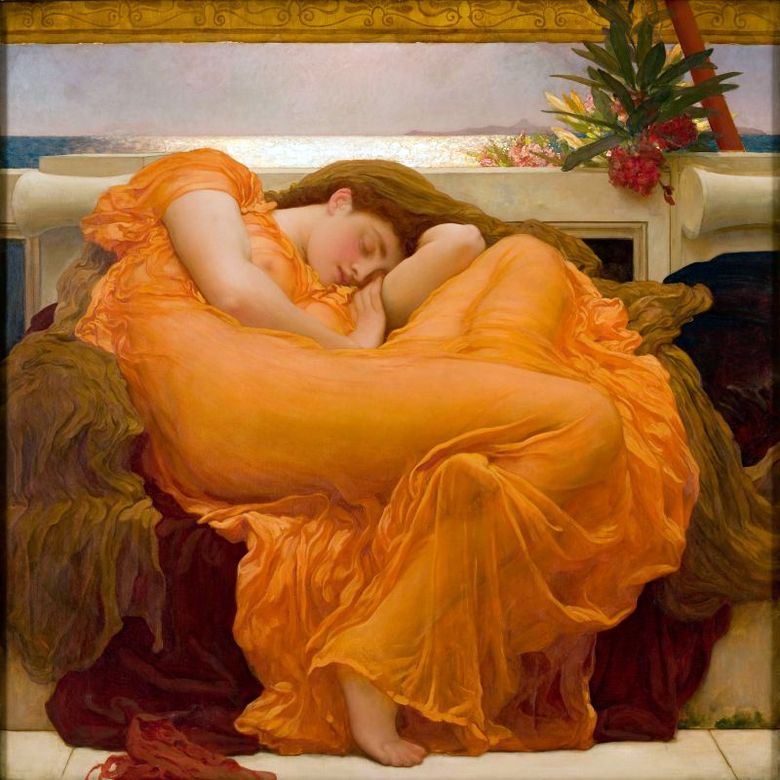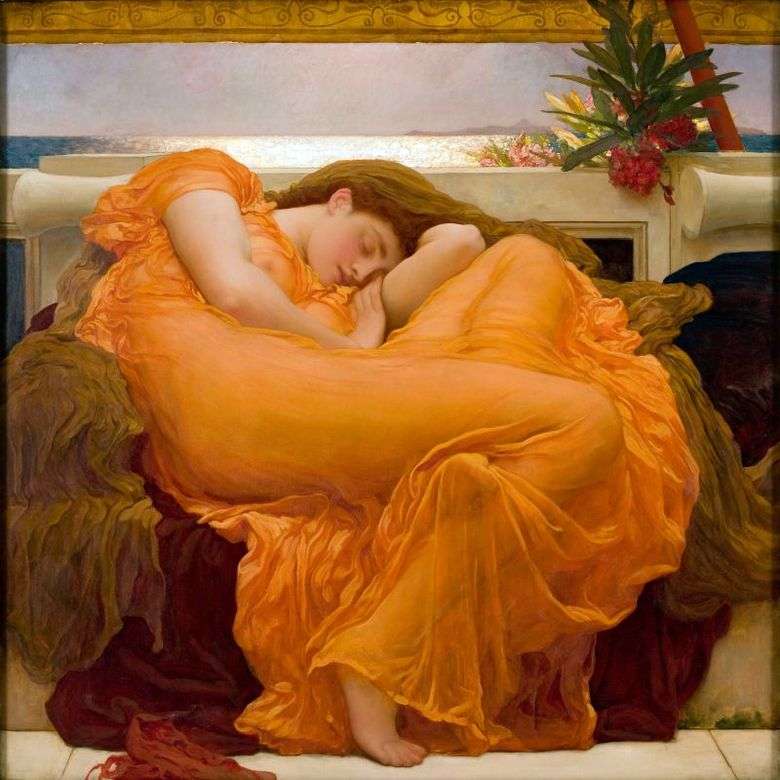
The famous “Burning June” Leighton wrote shortly before his death. According to him, the idea of the picture came to him when he saw the model that had fallen asleep in his studio. “I was struck by the flexibility and malleability of the figure of a tired girl,” said the artist, “and I decided to portray her.” Leighton had already portrayed sleeping girls by that time. And the very theme of sleep was extremely popular in the Victorian era.
Perhaps no painter of that time could not resist the temptation to write the “beautiful” dream of a young woman. Leighton, of course, knew this, and carefully worked through the composition, trying to make his picture not look like hundreds of other “sleeping canvases”.
Working on “Burning June”, he created many sketches, looking for the desired position of the model’s body and the most expressive format of the picture. The master brought the figure of the sleeping girl very close to the viewer and enclosed her in the framework of a “tight”, hermetic space, filled with summer heat and riddled with mystery.
 Burning June – Frederick Leighton
Burning June – Frederick Leighton Junio llameante – Frederick Leighton
Junio llameante – Frederick Leighton War Industry by Frederick Leighton
War Industry by Frederick Leighton Study for the composition “Dance” by Frederick Leighton
Study for the composition “Dance” by Frederick Leighton Nude Breed by Frederick Leighton
Nude Breed by Frederick Leighton The Garden of the Hesperides by Frederick Leighton
The Garden of the Hesperides by Frederick Leighton Music Lesson by Frederick Leighton
Music Lesson by Frederick Leighton Elisha, the resurrection of the Sunniman’s son by Frederick Leighton
Elisha, the resurrection of the Sunniman’s son by Frederick Leighton